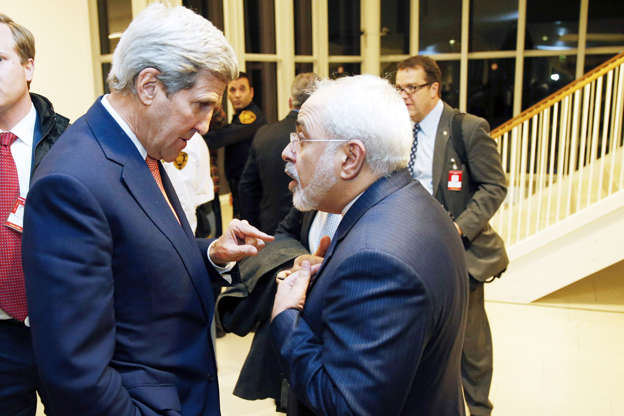
The International Atomic Energy Agency declared Saturday that Iran had fulfilled requirements to limit its nuclear activities, a step that automatically lifted nuclear-related economic sanctions imposed by the United Nations, European Union and United States. The move freed Iran to sell much more oil and gain control of roughly $100 billion in impounded money, ending a prolonged isolation that has driven the country into a deep economic malaise.
The actions signaled what diplomats have called Implementation Day — the most important phase so far of the historic nuclear agreement, known as the Joint Comprehensive Plan of Action, that Iran reached with the major world powers on July 14.
Q. Why were the actions taken simultaneously?
A. The coordinated timing was an important face-saving element built into the nuclear accord to avoid giving the impression that Iran had capitulated to Western pressure before sanctions were lifted. Iran’s supreme leader, Ayatollah Ali Khamenei, who has final authority over nuclear policy, had said the country would not regard the agreement as legitimate while the sanctions remained in force.
Q. What did Iran do to comply?
A. The International Atomic Energy Agency, the nuclear proliferation monitoring agency of the United Nations, had to verify the following steps had been taken by Iran to ensure its atomic work remains peaceful, at least for the next 15 years:
• Reducing its low-enriched uranium stockpile by 98 percent, leaving only about 660 pounds, an amount insufficient for weaponizing. The reduction was completed on Dec. 28, with the bulk of the uranium exported to Russia in a Russian ship.
• Dismantling 12,000 centrifuges used to enrich uranium. Iran said it had completed that work in November.
• Answering questions from international investigators about Iran’s past nuclear work with “possible military dimensions.” The International Atomic Energy Agency said on Dec. 15 that Iran had done so. Yukiya Amano, the agency’s director general, announced that it had “no credible indications” of such work after 2009.
• Removing and disabling the core of the nuclear reactor in Arak, which could have produced roughly two weapons’ worth of plutonium per year. Iran said it had completed that step this past week.
Q. What sanctions were lifted?
A. The European Union rescinded restrictions on trade and investment in oil, petrochemicals, metals, shipping, shipbuilding and other transportation industries, as well as banking, insurance and other related services, including Iran’s ability to move money electronically overseas. Visa bans and asset freezes on companies and individuals were lifted for these industries and for some others related to nuclear, arms and ballistic missile activities.
Through President Obama’s executive waiver authority, the United States halted the application of nuclear-related restrictions on Iran’s financial, oil, gas, petrochemical, shipping, metal and automotive industries, which had severely impeded the country’s ability to conduct business around the world. The United States also removed hundreds of individuals and companies from blacklists that had subjected them to asset freezes and other penalties.
The American steps included the creation of special licenses enabling United States manufacturers to sell civilian aircraft to Iran, which has one of the world’s oldest fleets and is said to need 400 to 600 new planes.
The United States also will allow imports of Iranian carpets, pistachios, saffron and caviar, and — perhaps most important — it will permit foreign subsidiaries of American companies, with certain restrictions, to do business in Iran. That provision could lead to the legal sale of American products there.
Nonetheless, other American sanctions remain in force. The United States government regards Iran as a state sponsor of terrorism and an abuser of human rights. It also accuses Iran of meddling in the affairs of United States allies in the Middle East. A trade embargo severely restricts most American business with Iran. While Iranian banks can buy and sell dollars, they cannot use the American banking system, an important conduit for global commerce.
Q. How quickly will Iran benefit economically from these changes?
A. The most immediate benefit to Iran will be access to roughly $100 billion of its money that was frozen in foreign accounts. Of that total, outside analysts estimate roughly half already is committed to other obligations, such as payments to foreign creditors including China. Iran also will be able to sell as much oil as it likes. But with the collapse of the oil market — prices have fallen 70 percent in the last 18 months — Iran will derive far less revenue than it had anticipated, and Iranian sales could further depress prices.
More broadly, the lifting of the sanctions is expected to diminish a psychological cloud in Iran, even if it is not felt immediately. “Iran’s international logistics for banking and shipping and insurance was so ravaged by the sanctions that the relief they will get now, albeit not perfect, is a large step up,” said Farhad Alavi, a lawyer in Washington who specializes in sanctions and trade law.
How will the lifting of sanctions change relations with the United States?
No comments:
Post a Comment